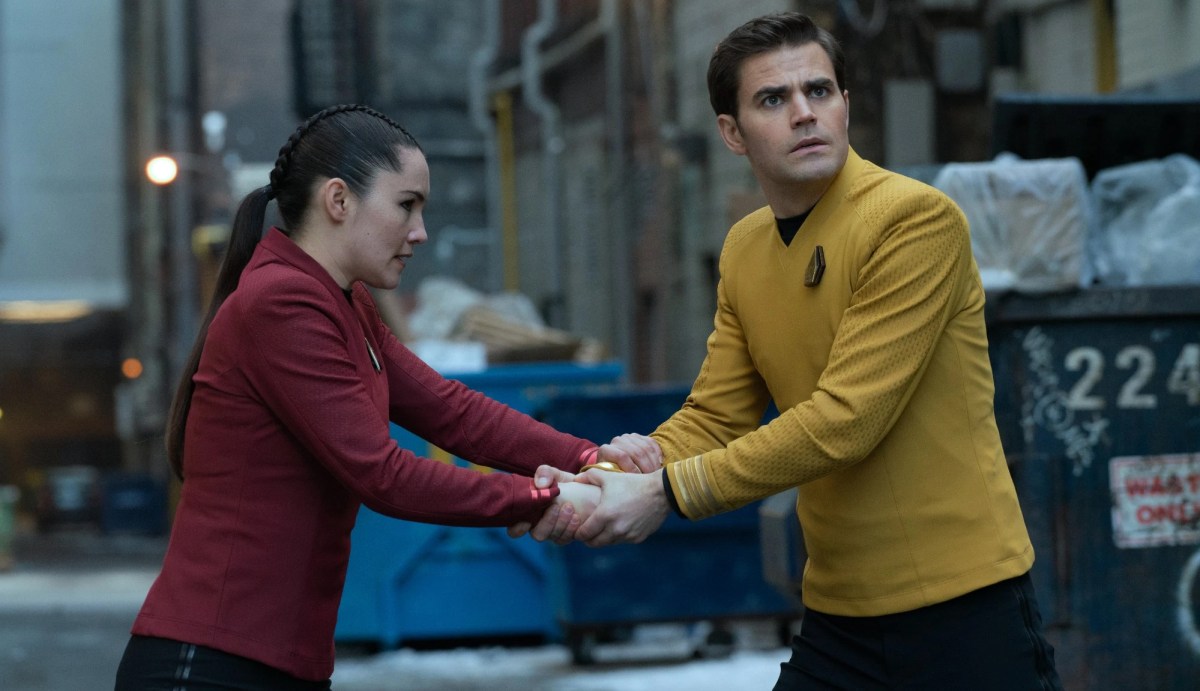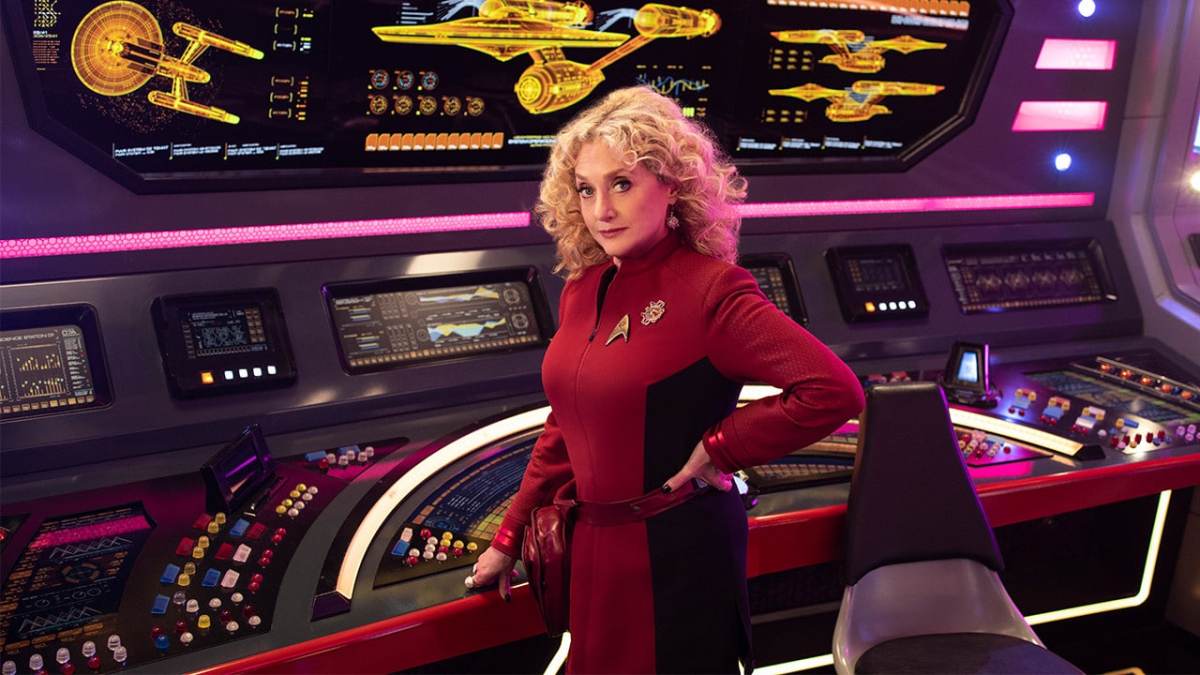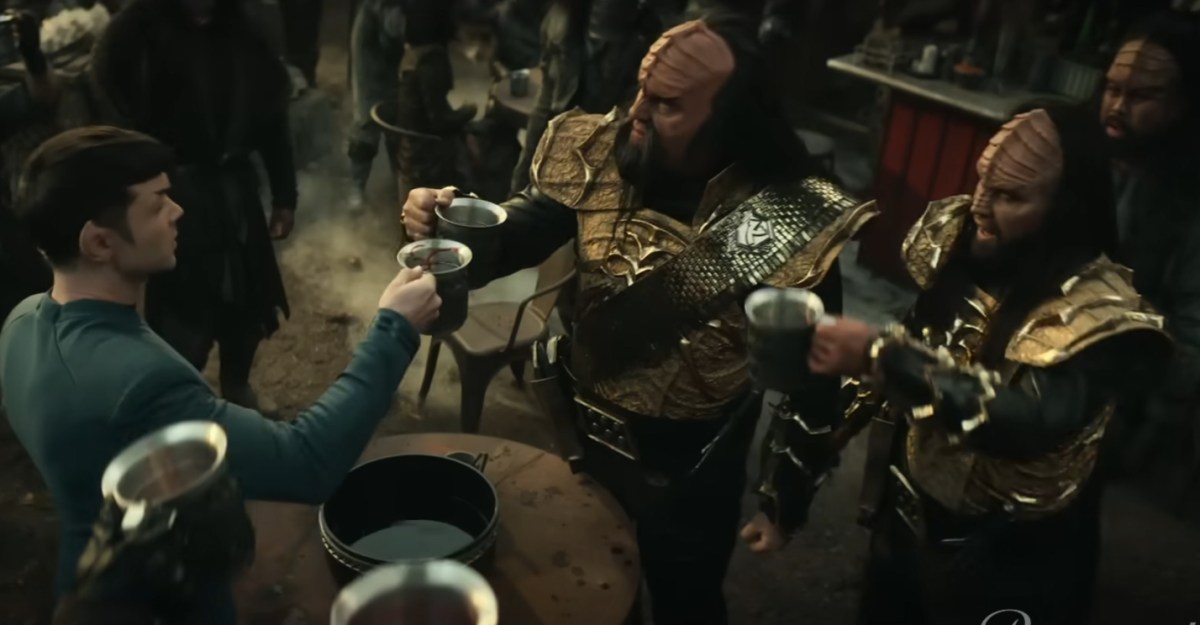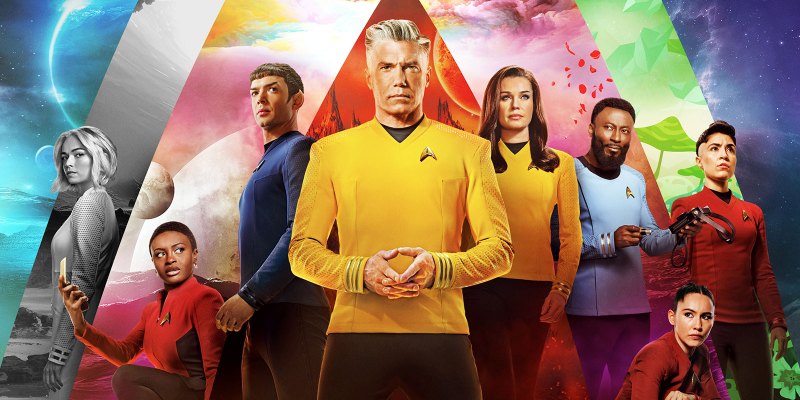This review contains only very light spoilers for Star Trek: Strange New Worlds season 2.
At the very least, the first six episodes of Star Trek: Strange New Worlds season 2 represent an improvement on the show’s first season. It’s still a Star Trek show that is too firmly rooted in nostalgia, chasing vague memories of the franchise’s history instead of looking to the future. However, to the show’s credit, the second season at least tries — however clumsily — to find something to say about the world in which it exists, even as it tries to conjure memories of a world long lost.
It’s easy to understand the nostalgia driving Strange New Worlds. While the show is a prequel to the original Star Trek, focusing on the crew introduced in the original and aborted pilot, “The Cage,” the actual format of the show hews closer to the Star Trek shows overseen by Rick Berman. In particular, the show’s weekly rotating-central-character-and-anomaly-of-the-week episodic structure evokes that of Star Trek: The Next Generation, Star Trek: Voyager, and the first two seasons of Enterprise.
This places it squarely in the nostalgic sweet spot for modern pop culture, landing perfectly for the demographic that vividly remembers their childhoods in the late 1980s and early 1990s. It’s of a piece with other recent revivals like Ghostbusters: Afterlife, Indiana Jones and the Dial of Destiny, or even The Flash. At the very least, Strange New Worlds feels somewhat less overtly cynical than the third season of Star Trek: Picard, because it’s leaning on more than just the iconography.
A lot of Star Trek fans have fond memories of that old episodic format. There’s a strong emotional connection to it. As such, even Spock (Ethan Peck) would concede that it is only logical for the franchise to try to resurrect that sort of storytelling. Unfortunately, Strange New Worlds repeatedly brushes up against the sorts of structural issues that demonstrate why so few streaming shows embrace that old-fashioned self-contained narrative structure.

Communications theorist Marshall McLuhan famously argued of television that “the medium is the message.” More than other forms of media like films or plays, the format and content of television was dictated by the economic realities of the medium. To pick an obvious example, while a director could choose the runtime of their feature film, the length of a broadcast television episode was determined by how much advertising the network had sold within that hour-long block.
Old Star Trek looked the way that it did because of the realities of the medium at that moment in time. Shows like The Next Generation and Voyager weren’t largely episodic because that was the best form for Star Trek, but because Paramount wanted to be able to sell the shows into syndication where they could be watched in any order. The shows had large ensembles because the broadcast season ran for 26 episodes every year, and so a rotating central character made sense.
The cast members of The Next Generation and Voyager could generally count on getting at least one episode centering on them each season, across the run of the show. Actors like Robert Beltran and Garrett Wang (justifiably) complained about how they were treated by the writing staff and the character arcs that they were given, but there was enough screen time to fill on Voyager that Chakotay (Beltran) and Kim (Wang) would get at least one story in a given year.
As such, this mode of storytelling made sense in the context of The Next Generation and Voyager. It does not make sense in the context of modern streaming television, where fewer episodes are produced less frequently. Whereas seasons of The Next Generation and Voyager ran for 26 episodes apiece and aired three months apart every year, Strange New Worlds only produces 10 episodes in a given season, and those seasons release 11 months apart.

To be clear, this is the reality of modern television production. It is unavoidable. There is simply no way to produce a modern Star Trek show that works the same way that The Next Generation and Voyager did. This is not a franchise that can work like the shows still running 20-plus-episode seasons on broadcast networks, like NCIS or Blue Bloods. Adapting to this reality is one of the central challenges driving the ongoing strike by the Writers’ Guild of America.
Strange New Worlds continuously brushes up against this reality. The show wants to evoke the production of 1990s Star Trek, but that model doesn’t easily fit within the confines of streaming-era television. This is most obvious looking at the cast. With only 10 episodes in a season, and with a lot of focus given to Captain Christopher Pike (Anson Mount) and Lieutenant Spock, there isn’t room to fully develop or explore the core ensemble. Actors aren’t guaranteed their own episodes.
Given the nostalgic drive behind Strange New Worlds, it’s often the least “important” characters that suffer. Ensign Erica Ortegas (Melissa Navia), the only series regular without a tie to existing continuity, has been particularly poorly served. The most attention that she gets in the first two seasons is in “Among the Lotus Eaters,” where she’s relegated to a subplot that is largely about how she should learn to be happy where she is. “We’ll get you next time, I promise,” Pike assures her. That’s another 11 months to wait.
Something similar happens to Nurse Christine Chapel (Jess Bush), who gets a similar “be happy where you are” subplot in “Charades,” an episode that focuses its primary plot on Spock and ultimately resolves Christine’s arc by giving Spock a revelation that changes how he sees her. These issues would be less pronounced on a show that was either more serialized or had longer seasons to develop these characters, but they demonstrate the limitations of the form in a show with these constraints.

The other big issue with this nostalgic invocation of the classic standalone format is that there have been more than 800 episodes of Star Trek by this point. There are very few stories that can be told in the hour-long standalone format that haven’t already been told. Indeed, it’s notable that Enterprise shifted away from that template in its final two seasons, embracing a season-long arc in its third season and a set of two- and three-part stories in its fourth year.
Watching Strange New Worlds frequently becomes a game of spotting the familiar Star Trek template. The season premiere, “The Broken Circle,” finds the crew engaged in some extralegal activity like in The Search for Spock and becoming embroiled in a conspiracy to start a war like in The Undiscovered Country. Hell, the first season’s cliffhanger ending, which finds Commander Una Chin-Riley (Rebecca Romijn) on trial by Starfleet, recalls the last season premiere of Lower Decks, which was also an homage to The Search for Spock.
As ever, there is some comfort to be had in seeing these sorts of templates employed once again. As with “Spock Amok” in the first season, “Charades” is a charming and worthy addition to the genre of “unfunny Star Trek comedy episodes.” While the action sequences in the season premiere feel a little too insistent, the season’s second episode, “Ad Astra Per Aspera,” is a sincere and loving homage to classic Star Trek trial episodes, complete with earnest and well-intentioned monologues.
To the show’s credit, Strange New Worlds season 2 tries to spice things up on occasion. The season’s third episode, “Tomorrow and Tomorrow and Tomorrow,” is fatally derailed by the sort of fan-service continuity nonsense that drives so much modern franchise media, but its first half is a surprisingly disarming collision of two familiar modes of Star Trek storytelling. Those two modes are very well worn individually, but there is something fresh in throwing them together.
At its best, Strange New Worlds season 2 doesn’t just try to emulate 1990s Star Trek. It tries to reckon with it. “Ad Astra Per Aspera” is the season’s standout episode and maybe the best live-action episode of Star Trek in five years. It works because it’s an affectionate homage to a particular type of sincere mode of Star Trek storytelling, but also because it represents a long overdue attempt to acknowledge a blind spot within the franchise. It tells a story for now.
One of the bigger issues with the first season of Strange New Worlds was that the show didn’t just emulate the narrative structure of 1990s Star Trek, but it also felt strangely disconnected from the present. A large part of the appeal of classic Star Trek was the way that it could engage with contemporary issues like the counterculture or Vietnam. The first season of Strange New Worlds often felt like it was still rooted in that Cold War paradigm.
The second season makes a more concerted effort to bring the content of Strange New Worlds into the new millennium. “Ad Astra Per Aspera” is the most obvious and successful example, because it’s the most unambiguous and the most justifiably angry. The fourth and sixth episodes, “Among the Lotus Eaters” and “Lost in Translation,” are a bit more abstract in what they are saying, but they feel like an attempt to use the show’s science-fiction trappings to say something about the modern world.
Still, without getting into specifics, Strange New Worlds season 2 leans heavily on nostalgia. James T. Kirk (Paul Wesley) becomes a recurring guest star, and one of the season’s episodes makes a point of closing on a shot of Kirk together with Spock and Uhura (Celia Rose Gooding). There’s an entire episode devoted to revisiting the starting point of Pike’s arc from “The Cage.” A famous continuity tangle and even more infamous character becomes key to the climax of “Tomorrow and Tomorrow and Tomorrow.”
Strange New Worlds continues to be an uneven show that feels like it’s taking Star Trek backwards rather than forwards. Still, perhaps particularly following on from the third season of Star Trek: Picard, there’s a lot to be said for the show’s genuine efforts to improve itself and to figure out, within that old template, what it is to be Star Trek in 2023. Strange New Worlds still isn’t strange or new enough, but at least it’s charting a course outwards.
